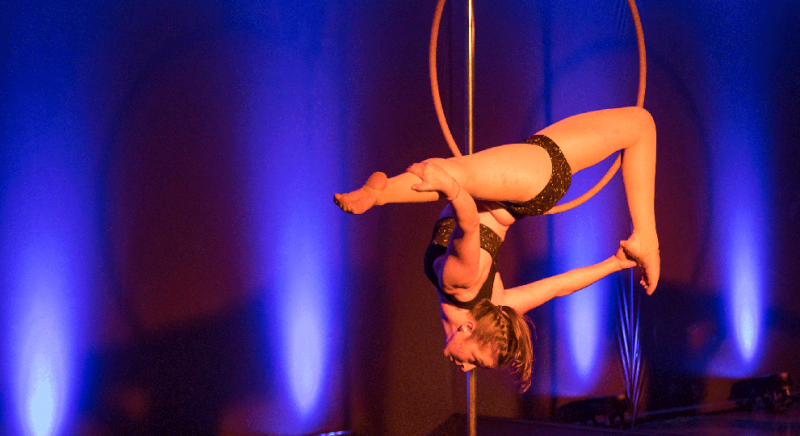Spinning Around: Why Lyra is the Next Big Thing in Pole
When it comes to aerial sports, lyra is definitely right up there with the list of most popular apparatuses. Find out why this seemingly simple shape is making heads spin in the pole world.
As a pole dancer, it’s no surprise that once you get hooked on pole, you’re tempted to try other aerial apparatuses such as lyra, silks or trapeze. Lyra in particular is fast becoming a huge sport in it’s own right, so much so that lyra comps are emerging all around the country, culminating in the recent national Miss Lyra competition.
And just like pole, which embraces all types of movement and dance expression, lyra is open and accessible to people who don’t come from a circus/dance/fitness background. To get an insight into the benefits of lyra and how it helps with pole, we spoke with our resident lyra queen, Yasmine McKee-Wright and two of her fabulous students, Annie Lin Soo and Naomi Chui, to hear what it’s like to be flying high on a hoop!
To start us off, Annie told us what she’s enjoying most about lyra: “lyra is a great workout but also really fun because there's a lot of beginner moves that look cool but are also quite do-able. Trying different apparatuses is fun and complements pole quite nicely.”
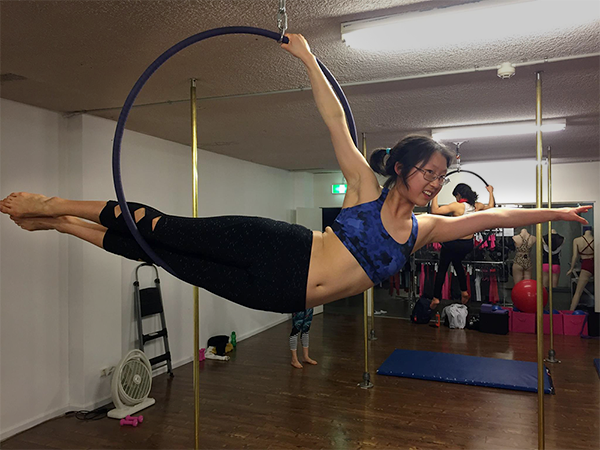
Student Annie Lin Soo in 'The Mermaid' pose
In terms of building strength, lyra is definitely a full body workout, requiring different types of grip, core stability and endurance to hold onto those gravity-defying shapes!
“Many lyra shapes are similar to pole, and we use many of the same muscles groups in climbing and executing skills,” explains Yasmine. “Lyra is fantastic for developing different types of grip (overgrip, undergrip, mixed grip), as well as increasing upper body strength and leg strength which translates on the pole.”
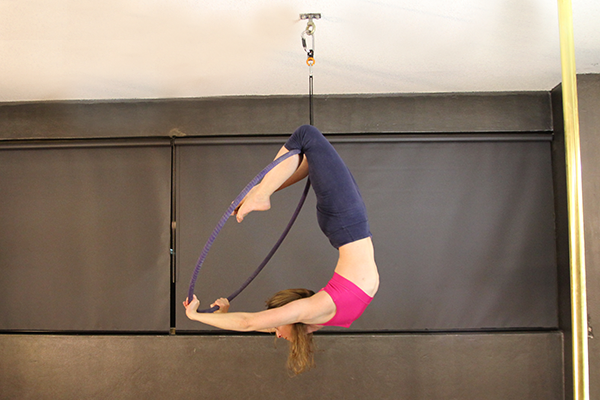
Instructor Yasmine in the 'Knee Hang Push Out' pose
From a student perspective, Naomi told us that lyra has helped her with building up her upper-body strength and core strength. “The harder you hold your core, the less it swings!” explains Naomi. “It gives me the confidence that I need to help with some moves on the pole.”
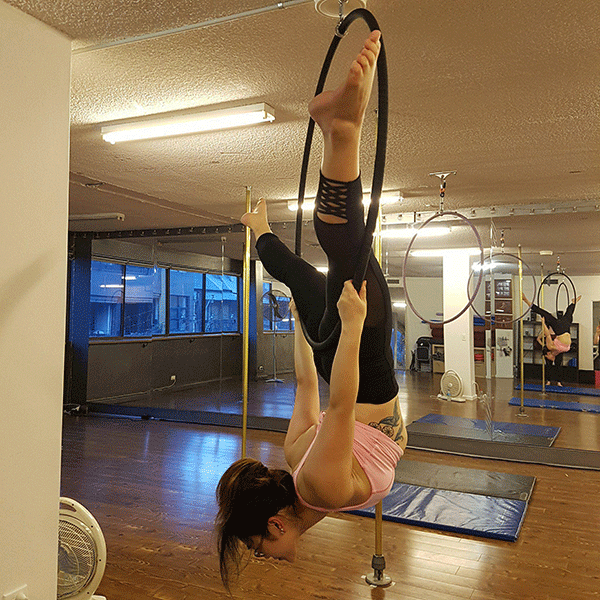
Student Naomi Chui in 'The Bird's Nest' pose
A big difference between lyra and pole is how they’re mounted. While pole spins, the lyra swings! Although it can be a bit scary at first, it also opens the way for plenty of interesting shapes and experimentation. It also feels very relaxing to just hang out in some oh-so-pretty poses such as lady in the moon, cradle and wine glass.
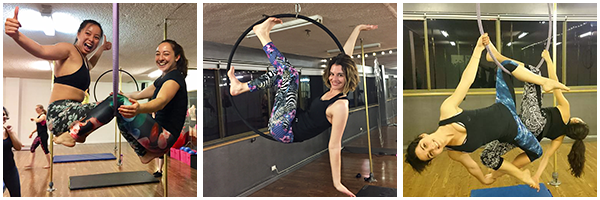
“I love lyra because it gives you a totally different sensation of freedom from pole”, explained Annie. “You can stay on the lyra for a bit longer and do really nice tricks.”
“It looks really impressive for relatively minimal effort,” Yasmine added, who gave us all a dazzling demo at Term 4 showcase. Check out her performance HERE
Finally, some handy advice for beginners: more clothing and less skin contact is better for lyra which means you can wear leggings, socks and long sleeves to each lesson – yay! Also Naomi had this to share for beginners: “Once you get on the lyra (which personally I find the hardest) everything is doable! It is also a great partner workout so newbies can try with their friends too!”
Thanks ladies for your input! Remember, lyra at Pole Athletica is open to everyone - you don’t have to be a pole student to try our lyra classes!
Our LyraFlow classes are moving to Thursday nights starting 30 May.
Happy spinning!
Ebony

